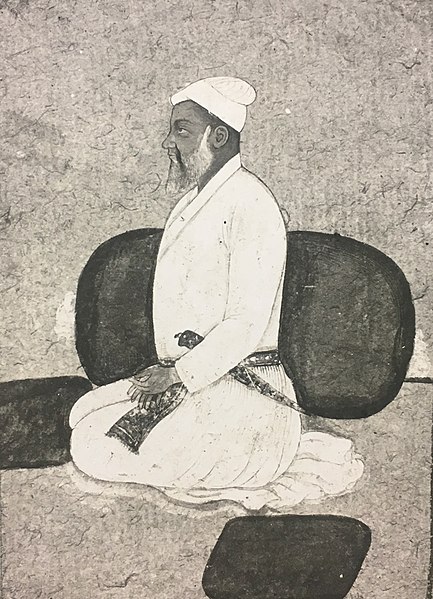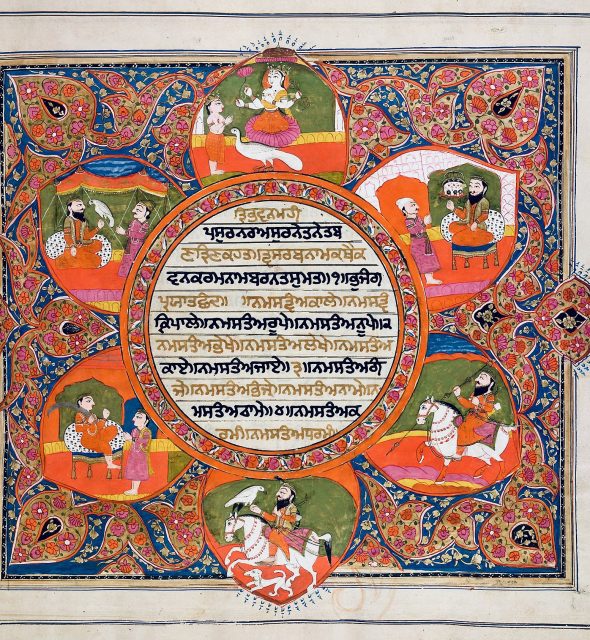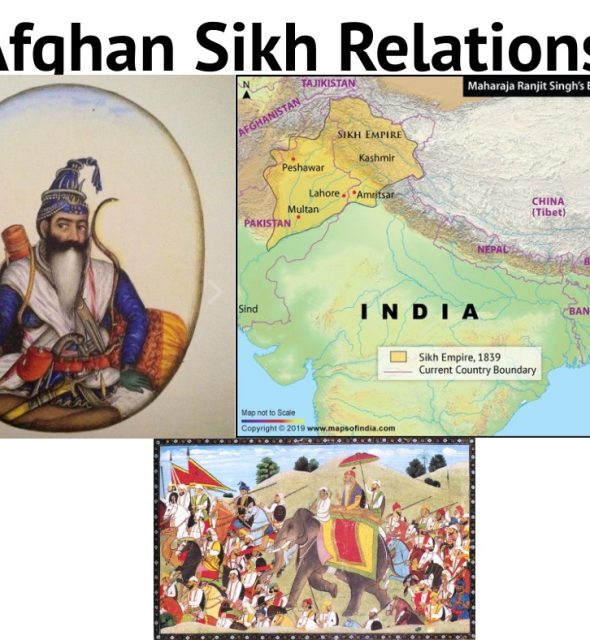
ADINA BEG KHAN (d. 1758), governor of the Punjab for a few months in AD 1758, was, according to Ahwal-i-Dina Beg Khan, an unpublished Persian manuscript, the son of Channu, of the Arain agriculturalist caste, mostly settled in Doaba region of the Punjab. He was born at the village of Sharakpur, near Lahore, now in Sheikhupura district of Pakistan. Adina Beg was brought up in Mughal homes, for the most part in Jalalabad, Khanpur and Bajvara in the Jalandhar Doab. Starting his career as a soldier, he rose to be collector of revenue of the village of Kang in the Lohian area, near Sultanpur Lodhi.
BAGHAR SINGH, BHAI, killed in 1740, was the youngest son of Bhai Alam Singh Nachna, of Duburji village in Sialkot district, a warrior in Guru Gobind Singh\'s retinue at Anandpur. His elder brothers, Mohar Singh and Amolak Singh, too, were soldiers and are believed to have died fighting along with their father in the battle of Chamkaur on 7 December 1705. As he grew up, Baghar Singh also joined the ranks of the Khalsa.
DHANNA SINGH MALVAI (1775-1843), soldier and jagirdar under Ranjit Singh, belonged to the village of Maur in Nabha territory. Mall Singh, Dhanna Singh`s father, who was the first in the family to be initiated a Sikh, left his village about 1760 and entered the service of Charhat Singh Sukkarchakkia as a sowar. He was killed in a campaign in the northwest. His son, Dhanna Singh, left Maur in 1793 and took up service with Sahib Singh Bharigi of Gujrat. About the year 1800, he enlisted himself in the force of Fateh Singh Kaliarivala as a trooper, and soon rose in his favour, obtaining an independent command.

FATEHNAMAH, by Bhai Dyal Singh, is a versified account of the victory (fateh, in Persian) of the Sikhs in the battle fought on Sunday, 22 Baisakh 1854 Bk/30 April 1797, against Shah Zaman`s forces led by one of his generals Ahmad Khan, also called Shahanchi Khan, in which the latter got killed and his forces fled the field. Nothing is known about the poet who, judging from his diction, belonged to the western parts of the Punjab. The poet showers special praise on the Sikh warrior.

AFGHAN SIKH RELATIONS spanning the years 1748 to 1849 go back to the first invasion of India by Ahmad Shah Durrani, although he must have heard of the Sikhs when in 1739 he accompanied Nadir Shah, the Iranian invader, as a young staff officer. Having occupied Lahore after a minor engagement fought on 11 January 1748 during his first invasion of India, Ahmad Shah advanced towards Sirhind to meet a Mughal army which he was informed was advancing from Delhi to oppose him. On the way he had two slight skirmishes at Sarai Nur Din and at the Vairoval ferry, both in present day Amritsar district, with a Sikh jatha or fighting band under Jassa Singh Ahluvalia.
BAGHEL SINGH (d. 1802), who succeeded in 1765 Karora Singh as leader of the Karor singhia misi or chief ship, is celebrated in Sikh history as the vanquisher of Mughal Delhi. A Dhalival Jatt, Baghel Singh arose from the village of Jhabal, in Amritsar district, to become a formidable force in the cis Sutlej region. According to Syad Muhammad Latif, he had under him 12,000 fighting men. As well as being a soldier, he was an adept in political negotiation and was able to win over many an adversary to his side. The Mughals, the Ruhilas, the Marathas and the English sought his friendship.







